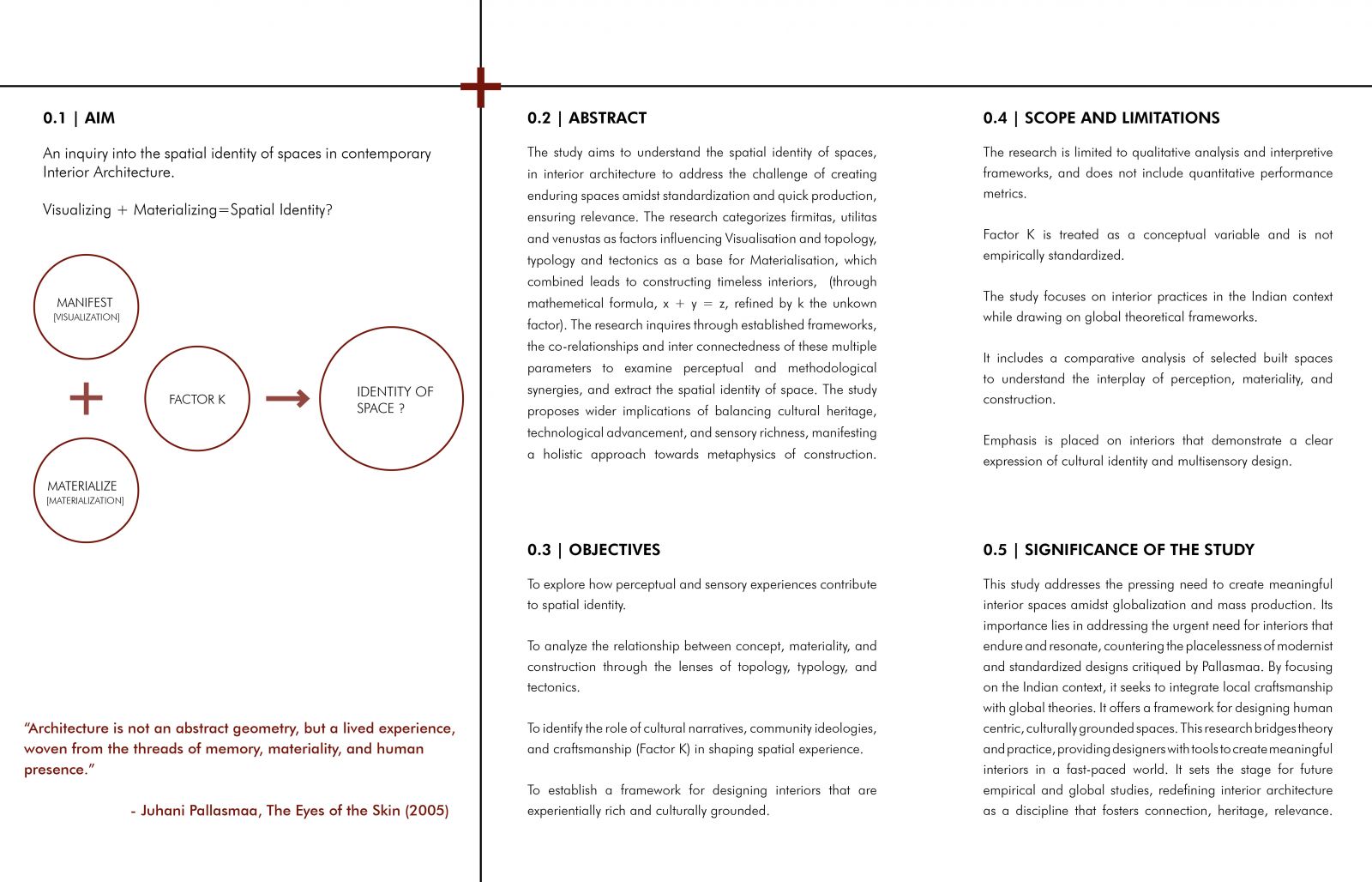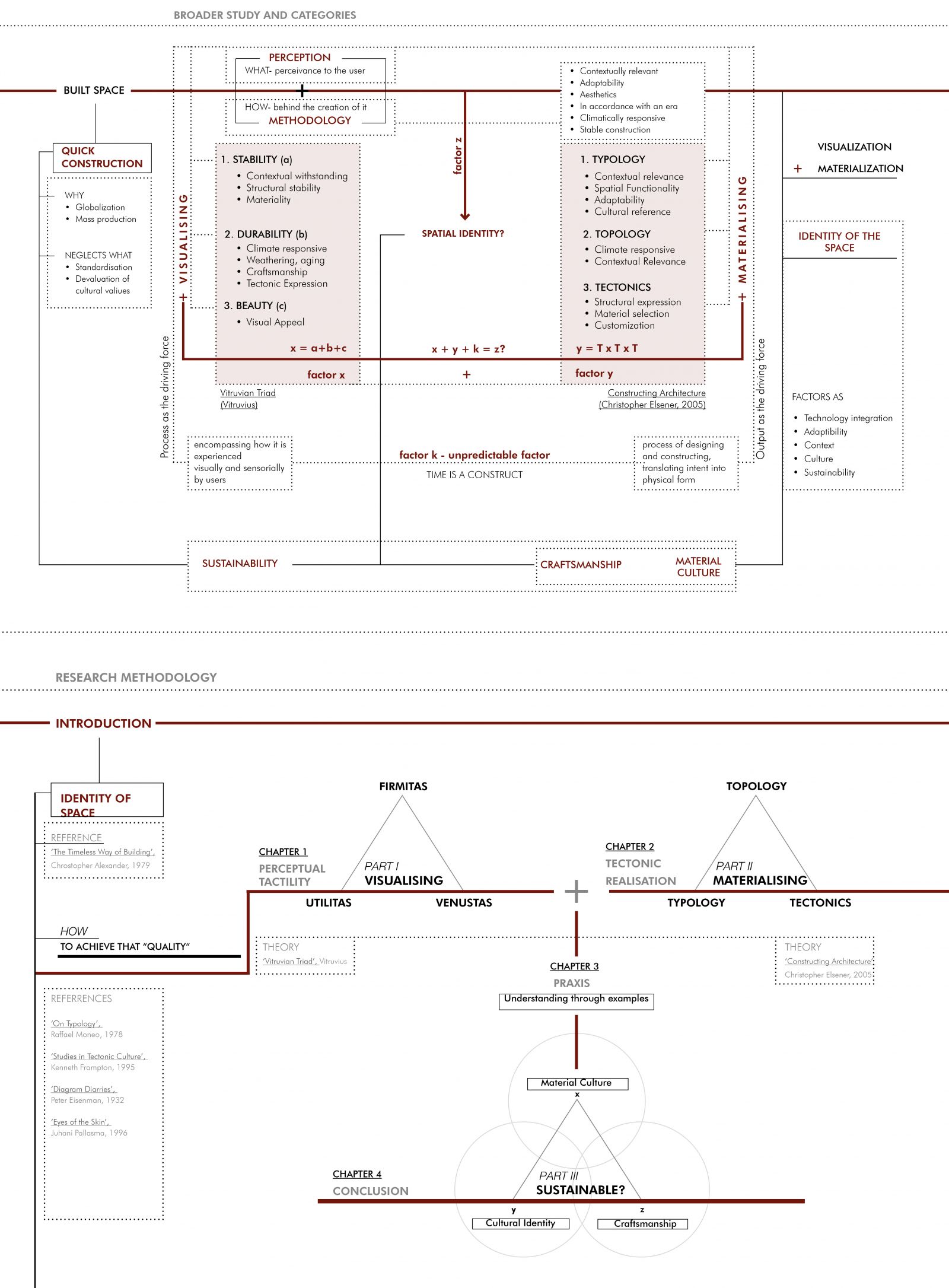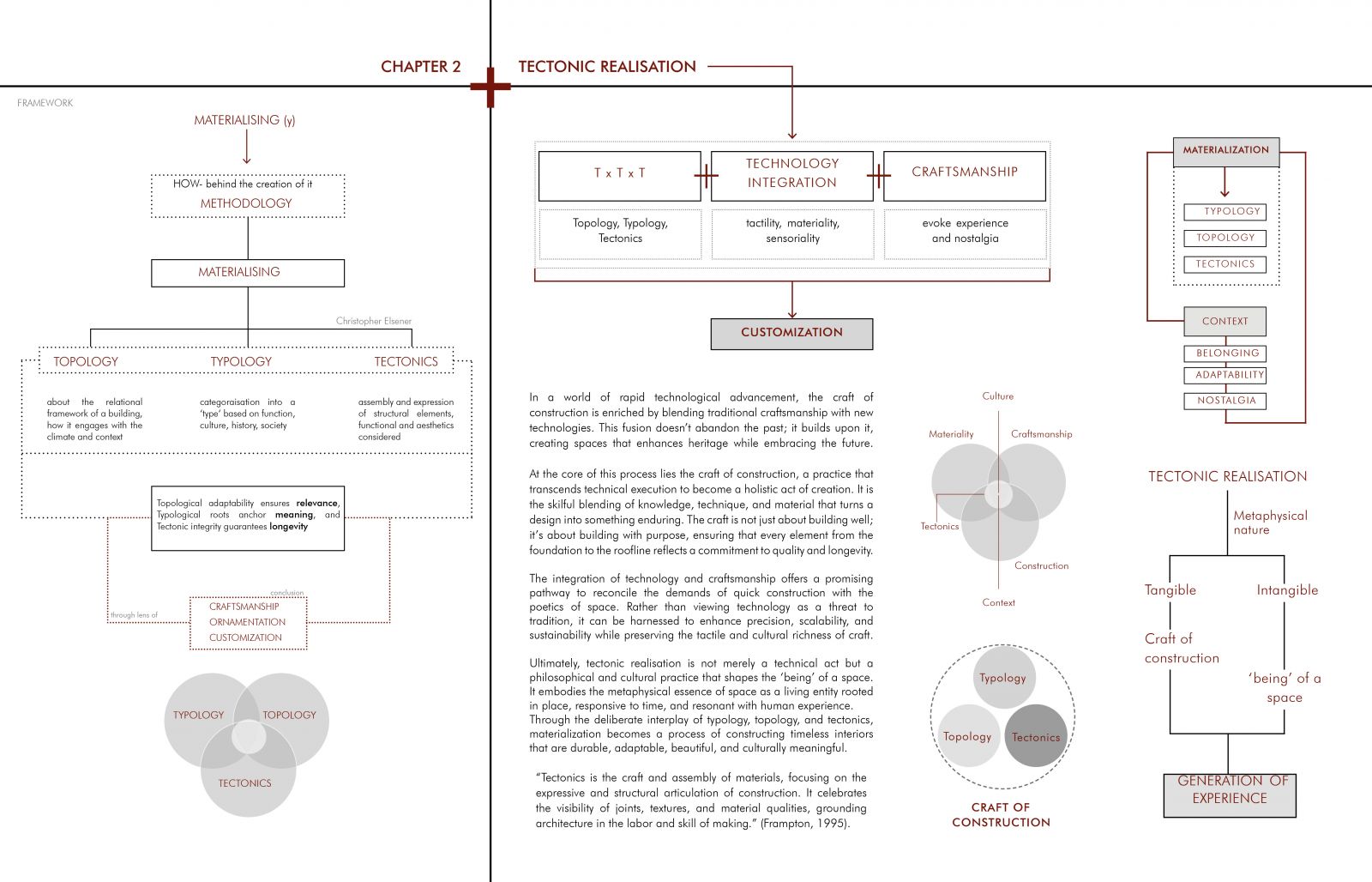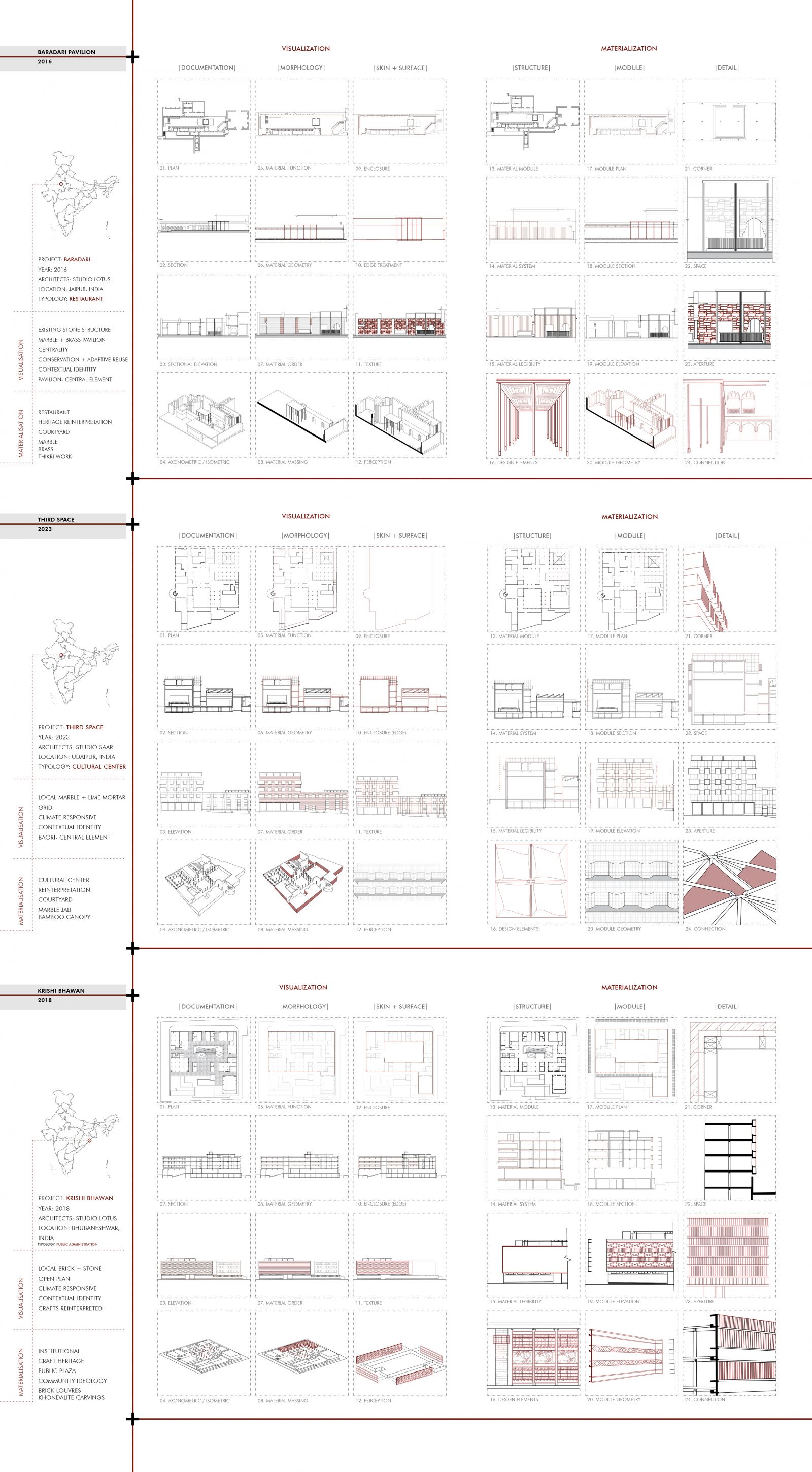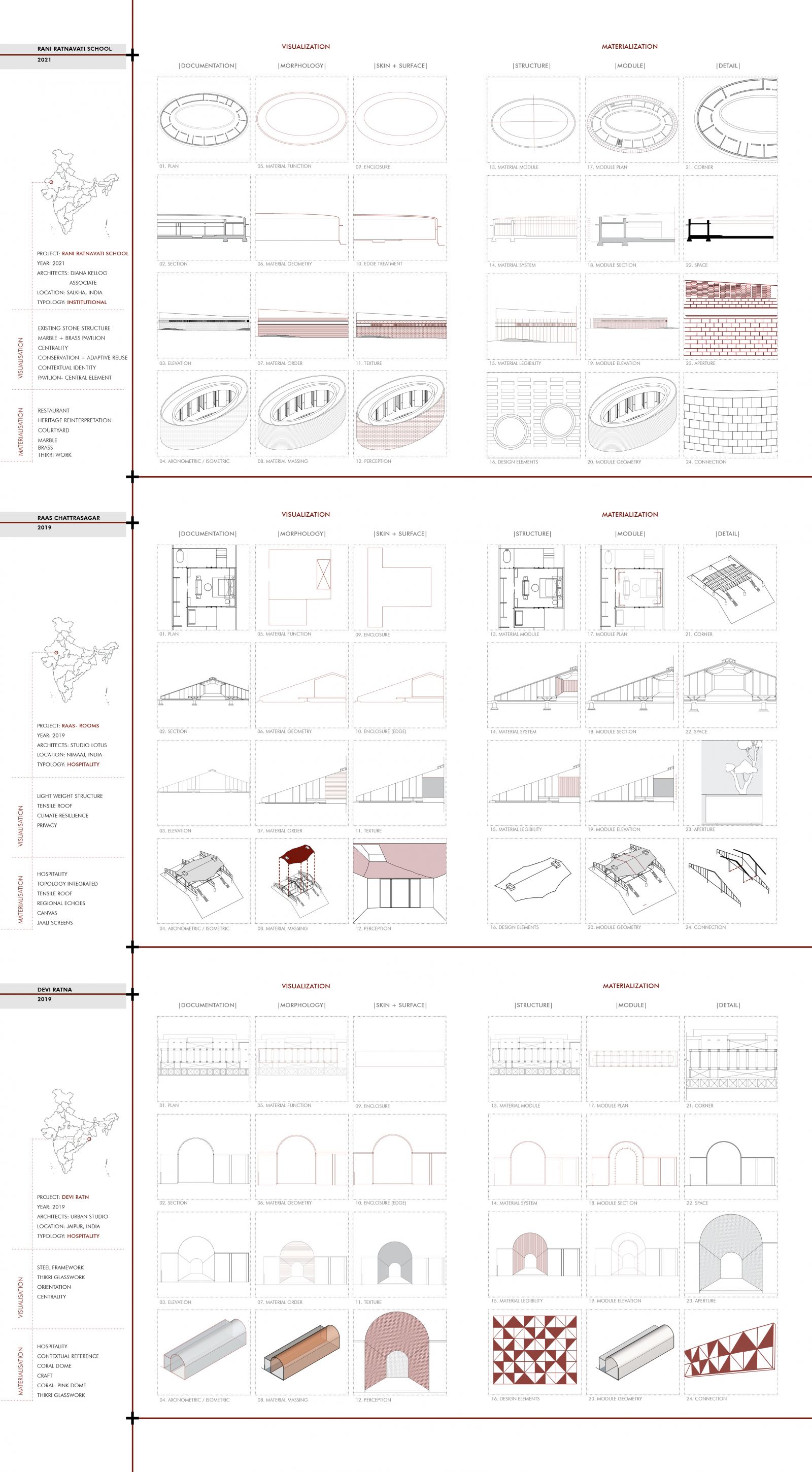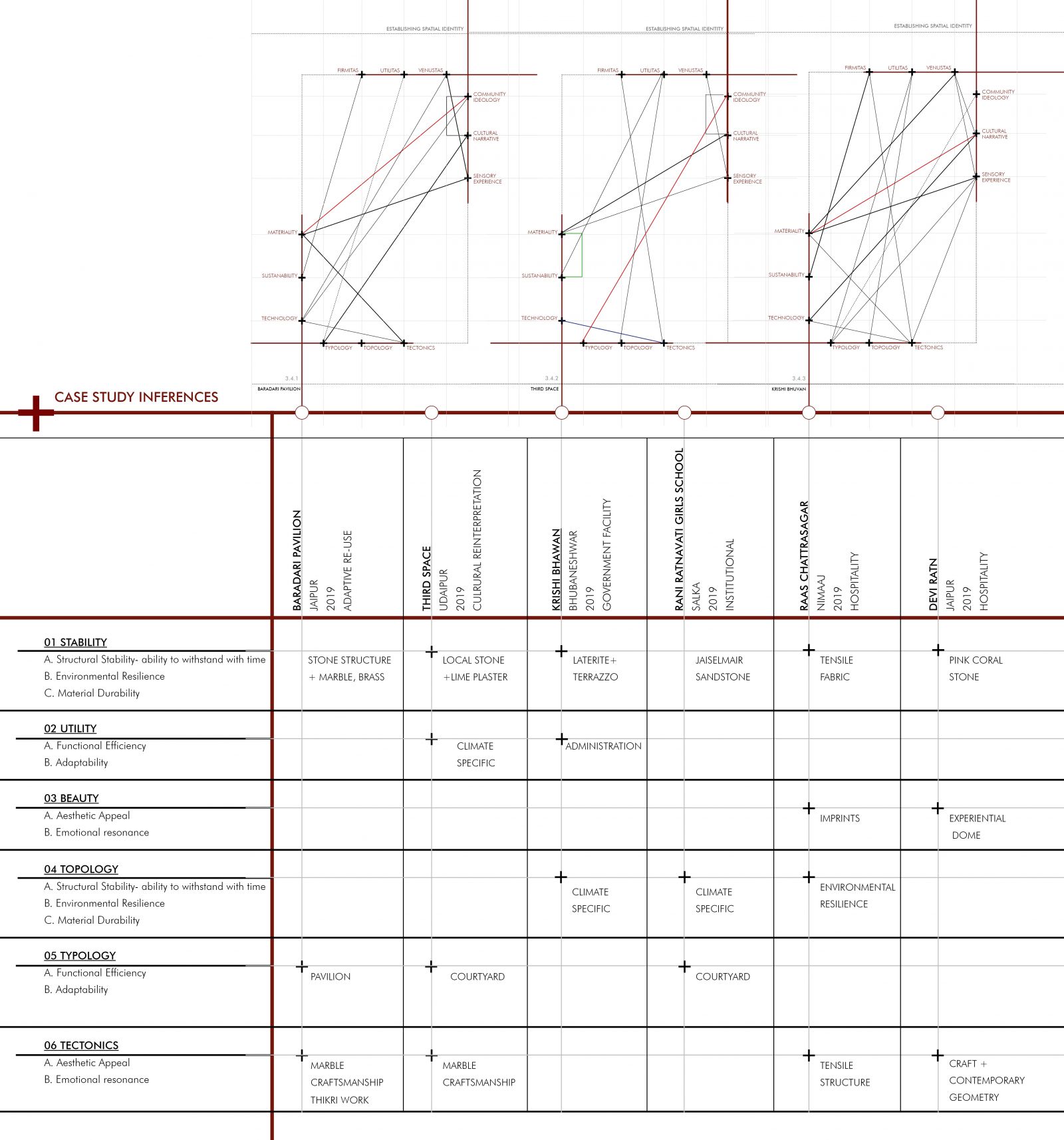Your browser is out-of-date!
For a richer surfing experience on our website, please update your browser. Update my browser now!
For a richer surfing experience on our website, please update your browser. Update my browser now!
In the age of quick construction and standardisation, the practice of interior architecture faces a profound challenge of creating spaces that endure and remain relevant. As a result of that spaces are losing their contextual relevance and cultural identity. The essence of space does not just depend on its physical form but is a metaphysical construct. Thid construct emerges from combination of perception, methodology and cultural narratives. By weaving together the Vitruvian principles of firmitas, utilitas, and venustas with the methodological frameworks of topology, typology, and tectonics, this study proposes a holistic approach to designing interiors that embody both sensory depth and cultural resonance. The concept of spatial identity is backed by spaces that are more than just being functional, spaces that shape the holistic expereince and memory. As Christopher Alexander articulates in The Timeless Way of Building (1979), “The timeless way is not just a way of building; it is a way of being, a way of understanding the world, and a way of living in it.” (Alexander,1979). This perspective underscores the need for interior architecture to move beyond aesthetic or utilitarian concerns and engage with the deeper, metaphysical dimensions of space. ise of modernism in the 20th century, with its emphasis on abstraction, universality, and visual dominance, often sidelined the sensory and cultural dimensions of design. Hence ths study aims to create a framework that combines visualisation and materialisation to achieve such spaces. Drawing on Vitruvius’ triad, firmitas ensures structural and material durability, utilitas addresses functional and ergonomic needs, and venustas evokes sensory and aesthetic delight. These principles, form the foundation of visualization, the process of conceptualizing a space’s identity. Simultaneously, the study explores materialization through the lenses of topology (spatial relationships), typology (archetypal forms), and tectonics (construction logic). This becomes the base for materialisation, which translates abstract concepts into tangible realities.

